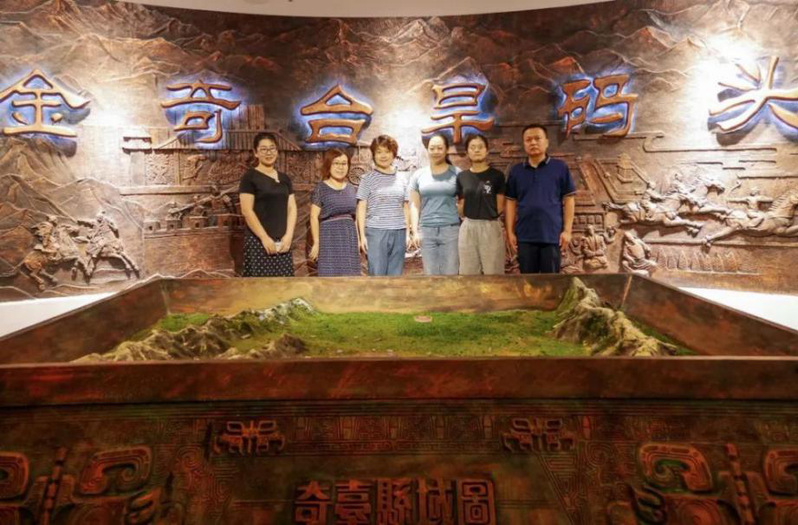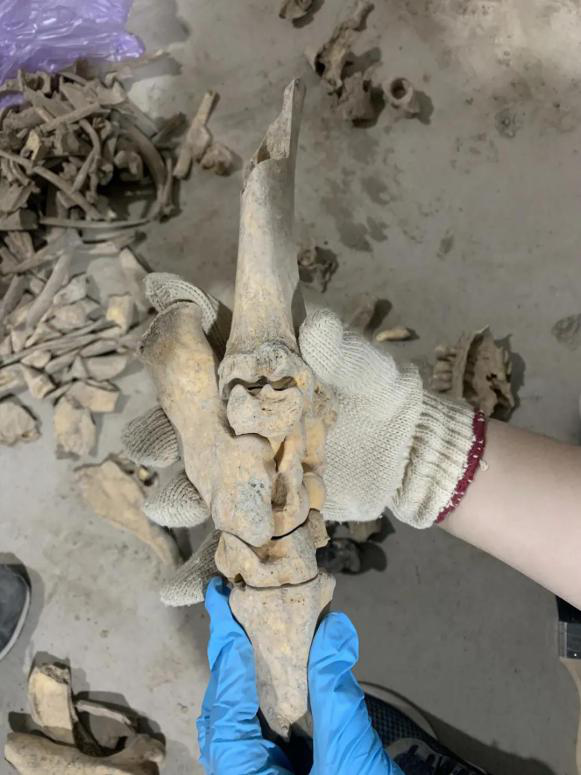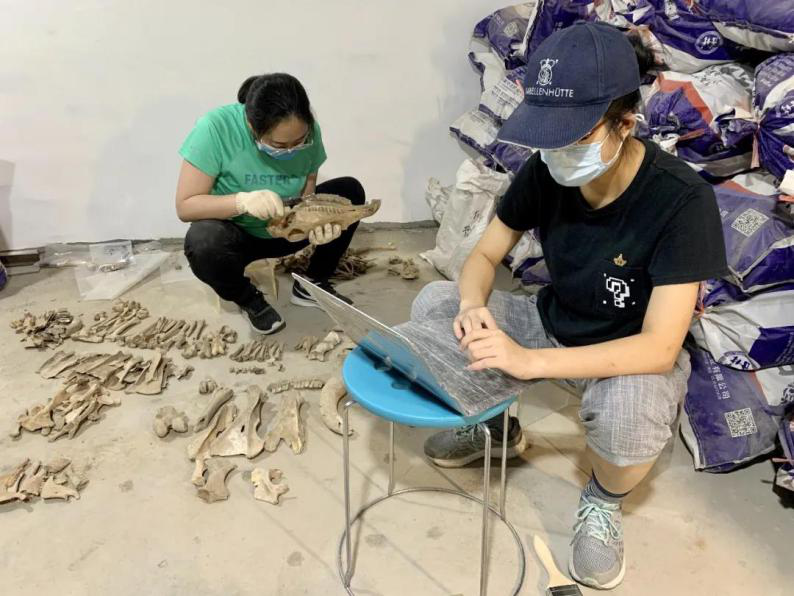A project by researchers from the Fudan Institute of Archaeological Science (IAS), was announced as a National Social Science Fund Youth Project of 2020 on 9th September.
The National Social Science Fund Youth Project set up by the National Social Science Fund aims to support young researchers aged under 35. The National Social Science Fund of China subsidizes each year only a selected few philosophy and social science projects which demonstrate great research potential in the field.

Dong Ningning (3rd from the left), Sun Chen and Zhu Xuchu pose inside a museum in Qitai County, Xinjiang
The project titled “A zooarchaeological study of Xinjiang’s fortified border cities during the Han Dynasty”, was initiated and carried out by Dong Ningning and two of her students, Zhu Xuchu and Sun Chen.
From July to August this year, they stayed in Qitai County of Xinjiang to investigate the residents’ life there during the Han Dynasty by scrutinizing and identifying more than ten thousand animals bones unearthed from the archaeological site called Shichengzi which was discovered in 1972. Throughout the years, archaeologists across China have been amazed at the excavated objects. Recent excavations have been carried out since 2017. The Shichengzi site was entitled as one of the Top 10 New Archaeological Discoveries of China of 2019.

Articulated bones excavated from Shichengzi
The Shichengzi site stood as a fortified border city of great importance back in the Han Dynasty. It not only occupied a critical location linking China with the Western world through the Silk Road, but also witnessed how different Chinese ethnic groups interacted with each other. Recognizing the vital role of Shichengzi in the history of China, Dong Ningning and her two students spared no time in examining its faunal remains. Their research sheds light on what life was like in Shichengzi around 2,000 years ago.

Sun Chen (left) and Zhu Xuchu (right) examine the bones
The zooarchaeological procedure on site, however, was tedious. Dong’s team needed to first record the basic information of each bone specimen. After giving each a serial number, they then added tags of the taxa (i.e. cattle, horse, sheep/goat, swine, dog, etc.) and the body parts (i.e. skull, spine, radius, femur, etc.). Only after collecting these preliminary information did they actually start checking the bone’s condition by looking into the extent of erosion and weathering, and other surface traces that tell about the ancient fortified city.
“Although zooarchaeology deals with animals, it is the knowledge about the human past that we aim to acquire,” explained Dong Ningning.
Dong’s team, through oxygen isotope analysis of tooth enamel sampled in sequence, aims to unveil why and how the ancient people in Shichengzi military garrisons raised livestock and thereby illuminate the universal theme of the relationship between animal and human.
But they won’t stop here. Dong and her students plan to expand their scope of research by linking this project with other projects on animal remains in Xinjiang.
“We’d like to explore the chronological change of livelihoods in Xinjiang from prehistory to the end of the Han Dynasty,” said Dong, “and we will also compare the practices of animal husbandry across Xinjiang to grasp an overall picture.”
Source: Fudan Institute of Archaeological Science, Fudan News Center


